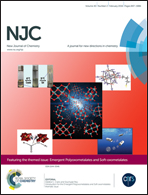Pathways for oxygen-isotope exchange in two model oxide clusters
Abstract
Studies of oxygen-isotope-exchanges in two classes of polyoxoions have uncovered some similarities in reaction steps that are also consistent with mineral-dissolution studies. The molecules were polyoxocations of Group 13 and polyoxoanions of Group 5, and the work was motivated by a desire to understand the dissolution of oxide minerals at the molecular scale. Experimentally, oxygen-isotope-exchange rates are found to be intensely sensitive to single-atom substitutions in the structures, even at sites that are otherwise inert. Exchange rates for different structural oxygen sites span several orders of magnitude, yet most oxygens within a molecule exhibit similar pH dependencies to isotopic exchange and these seem to reflect an average proton affinity of the ion. Single-atom substitutions have a dramatic affect on both the pH dependences of oxygen-isotope-exchanges and the overall reactivity of oxygen sites. Molecular dynamic and electronic-structure calculations identify similar steps in the pathways for exchange – (i) solvation forces cause a near-surface metal to detach from an underlying overbonded oxygen. (ii) This newly undercoordinated metal adds an isotopically normal oxygen as either a water, a hydronium ion or an hydroxide ion. (iii) Protons transfer from these adducts to more basic oxygens in the metastable structure. (iv) The metastability is longlived but access to the metastable state depends on the composition and symmetry of the starting structure, which is why single-atom substitutions are so important. (v) Within the metastable structure, oxygens shuffle positions and the metastable state collapses back into a more stable form. Pathways to form these metastable structures depend on the symmetry and composition of the starting geometry, which probably can't be adequately constrained for meaningful simulation at mineral surfaces.

- This article is part of the themed collection: Emergent Polyoxometalates and Soft-oxometalates

 Please wait while we load your content...
Please wait while we load your content...